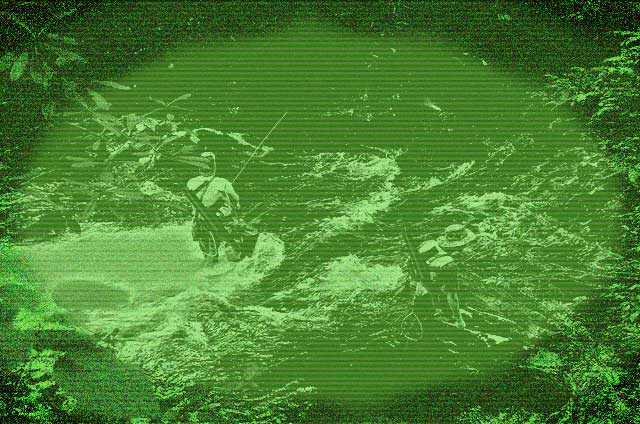Book Review: A Bridge To FUBAR

Special Forces 4/1 Team members cast mouse patterns to the reclusive Korean dragon trout.
“We saw dark, massive trout hovering in the pools. These were the Korean jamjari—‘dragons’—we had heard about from earlier recon teams—fish as big as the fabled taimen. On the next mission, we had our fly rods.”
So begins the wild tale recounted in A Bridge To FUBAR: Long Walks and Nice Casts in North Korea 2006-2011, a memoir by Nicholas Bradshaw (a pseudonym) that recounts nine top-secret missions undertaken by U.S. Army Special Forces’ 4/1 Team, penetrating deep into North Korea to make undetected observations of military installations.
Bradshaw was the 4/1 Team’s navigation specialist and assistant team leader, having qualified for Special Forces (the “Green Berets”) in 2004. He retired from Special Forces in 2012 at the rank of Staff Sergeant.
The stories of these missions—each starting with Bradshaw’s six-man Long Range Surveillance (LRS) team departing an off-shore vessel somewhere along the North Hamgyong provincial coast—are woven with a fly-fishing subplot that reveals details of one of the most secret documents in the American military: a map of North Korea’s blue-ribbon trout streams along its upper coast on the Sea of Japan.
The 4/1 Team made a multiple insertions along this forested coastline between Cheongjin and Songjin. Their recon target in this region was a rocket-launching site. Not until his third mission into Hamgyong did Bradshaw finally cast a fly.
“On the previous mission, we had found a very good river on a mountain slope about 15 kilometers north of Songjin. We saw plenty of big trout, and we knew we’d be coming back to this area,” Bradshaw writes, in a chapter titled, “A Big, Two-Hearted Dictator’s River Runs Through It.”
“Before the next mission, I reconfigured my gear so that I could carry a rod case,” Bradshaw says. “Two others on my team did the same. We put reels in our rucksacks, and tucked flies inside the bands of our boonie hats.”
Bradshaw knew exactly what fly to use for the Korean “dragons”: MacArthur’s Mouse, a large rubber and deer-hair rodent originated by the late Dick Talleur.
On that fifth mission, the 4/1 Team spent four days watching vehicle traffic around the Musudan-ri rocket base. During exfiltration, they spent the last night in country along the east fork of a river that drained into the sea. While three team members kept watch with night-vision goggles, Bradshaw and two others cast the heavy mouse pattern to the dragon trout, so named for their great size, dark coloration, long barbells, and dorsal fin with its single venomous spine.
A video at the book-launch party, in Washington DC last month, showed spooky night-vision images of Bradshaw casting to pitch-black water on a cold October night in 2008: A bright fly line streaks into the dark. Seconds later, lightning-like splashes of water rise up from the thrashing body of a massive trout. After an intense 15-minute battle, Bradshaw brings to the net a fish that he quickly measures at 39 inches. He releases the fish, and the team slips back into the night.
Very little is known about the jamjari trout, but Western ichthyologists believe that they are closely related to the Yalu River taimen, Hucho ishikawai.
The 4/1 Team’s blue-ribbon trout map is still classified and military censors forbid Bradshaw from recreating it for publication in A Bridge to FUBAR.
“I know why the trout-stream map is so sensitive a document,” Bradshaw said. “We took photographs of the boundary markers in the sector where we fished. Later, when we had the writing on the markers translated, we found out that they said, ‘No Trespassing. Private Water. These rivers and fish belong to the Beloved Supreme Leader.”
Indeed, the Green Berets poached Kim Jong Il’s trout, in what might be the best fishing story of the year.
A Bridge To FUBAR: Long Walks and Nice Casts in North Korea 2006-2011. Walter Kurtz Books (Publisher). 216 pages, illustrated. $25.











